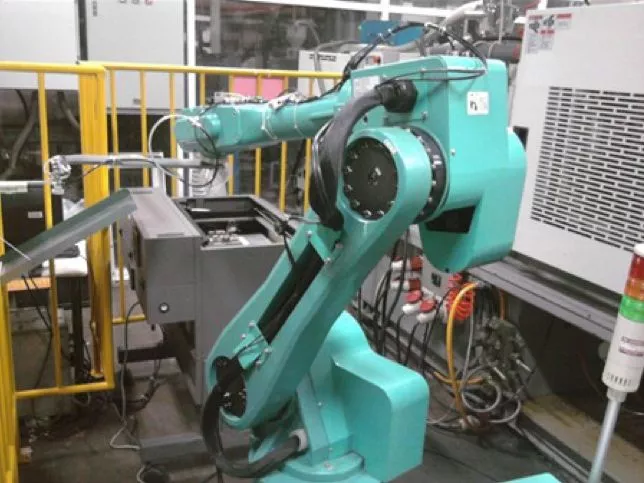Foxconn has begun rolling out its robotic workforce, although reaching its stated goal of one million robot workers by 2014 may have been overly optimistic. Since 2011, the company has only built and deployed approximately 10,000 robots in one of its factories, and will only deliver 1/10th of the 300,000 robots it had planned by the end of 2012. The company employs 1.2 million workers, 400,000 of which manufacture Apple products.
The appropriately named Foxbots come in a variety of forms including industrial arms, lifts, and pick and place robots that cost between US$20,000 to $25,000 dollars. This is relatively expensive when compared with the average worker salary of $6,400 a year, a figure that doubled from 2010 to 2011. Chinese news reports suggest the robots are only intended for simple and repetitious tasks, but are capable of precise movements. A new factory in Jincheng, Shanxi Province, China will be dedicated to manufacturing them.
Foxconn has repeatedly come under fire for its unfair labor practices, which have resulted in worker unrest and multiple suicides. Recent reports paint a dim picture of the company, from an underage workers scandal to key executives leaving the company. These and other factors have contributed to Foxconn's decision to use more robot labor.
According to the International Federation of Robotics, only 74,300 robots were operational in China in 2011.
Source: Techweb (Chinese) and China Daily via The Robot Report
Foxconn has begun rolling out its robotic workforce, although reaching its stated goal of one million robot workers by 2014 may have been overly optimistic. Since 2011, the company has only built and deployed approximately 10,000 robots in one of its factories, and will only deliver 1/10th of the 300,000 robots it had planned by the end of 2012. The company employs 1.2 million workers, 400,000 of which manufacture Apple products.
The appropriately named Foxbots come in a variety of forms including industrial arms, lifts, and pick and place robots that cost between US$20,000 to $25,000 dollars. This is relatively expensive when compared with the average worker salary of $6,400 a year, a figure that doubled from 2010 to 2011. Chinese news reports suggest the robots are only intended for simple and repetitious tasks, but are capable of precise movements. A new factory in Jincheng, Shanxi Province, China will be dedicated to manufacturing them.
Foxconn has repeatedly come under fire for its unfair labor practices, which have resulted in worker unrest and multiple suicides. Recent reports paint a dim picture of the company, from an underage workers scandal to key executives leaving the company. These and other factors have contributed to Foxconn's decision to use more robot labor.
According to the International Federation of Robotics, only 74,300 robots were operational in China in 2011.
Source: Techweb (Chinese) and China Daily via The Robot Report




